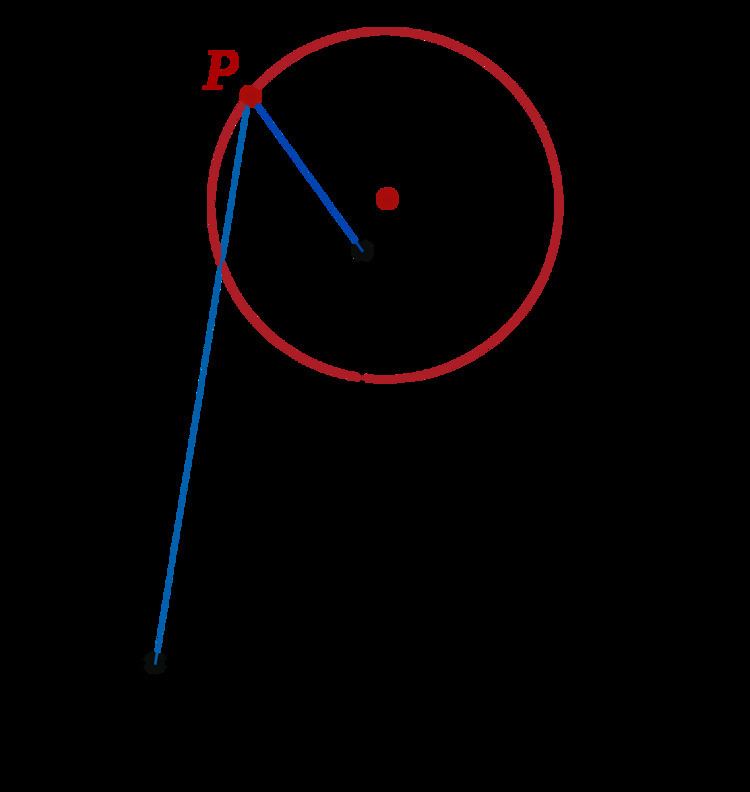 | ||
In geometry, a locus (plural: loci) (Latin word for "place", "location") is a set of points (commonly, a line, a line segment, a curve or a surface), whose location satisfies or is determined by one or more specified conditions.
Contents
History and philosophy
Until the beginning of 20th century, a geometrical shape (for example a curve) was not considered as an infinite set of points; rather, it was considered as an entity on which a point may be located or on which it moves. Thus a circle in the Euclidean plane was defined as the locus of a point that is at a given distance of a fixed point, the center of the circle. In modern mathematics, similar concepts are more frequently reformulated by describing shapes as sets; for instance, one says that the circle is the set of points that are at a given distance of the center.
In contrast to the set-theoretic view, the old formulation avoids considering infinite collections, as avoiding the actual infinite was an important philosophical position of earlier mathematicians.
Once set theory became the universal basis over which the whole mathematics is built, the term of locus became rather old fashioned. Nevertheless, the word is still widely used, mainly for a concise formulation, for example:
More recently, techniques such as the theory of schemes, and the use of category theory instead of set theory to give a foundation to mathematics, have returned to notions more like the original definition of a locus as an object in itself rather than as a set of points.
Examples in plane geometry
Examples from plane geometry include:
Other examples of loci appear in various areas of mathematics. For example, in complex dynamics, the Mandelbrot set is a subset of the complex plane that may be characterized as the connectedness locus of a family of polynomial maps.
Proof of a locus
To prove a geometric shape is the correct locus for a given set of conditions, one generally divides the proof into two stages:
First example
We find the locus of the points P that have a given ratio of distances k = d1/d2 to two given points.
In this example we choose k= 3, A(-1,0) and B(0,2) as the fixed points.
This equation represents a circle with center (1/8,9/4) and radius
Second example
A triangle ABC has a fixed side [AB] with length c. We determine the locus of the third vertex C such that the medians from A and C are orthogonal.
We choose an orthonormal coordinate system such that A(-c/2,0), B(c/2,0). C(x,y) is the variable third vertex. The center of [BC] is M( (2x+c)/4, y/2 ). The median from C has a slope y/x. The median AM has slope 2y/(2x+3c).
The locus of the vertex C is a circle with center (-3c/4,0) and radius 3c/4.
Third example
A locus can also be defined by two associated curves depending on one common parameter. If the parameter varies, the intersection points of the associated curves describe the locus.
In the figure, the points K and L are fixed points on a given line m. The line k is a variable line through K. The line l through L is perpendicular to k. The angle
Fourth example
A locus of points need not be one-dimensional (as a circle, line, etc.). For example, the locus of the inequality 2x+3y–6<0 is the portion of the plane that is below the line 2x+3y–6=0.
